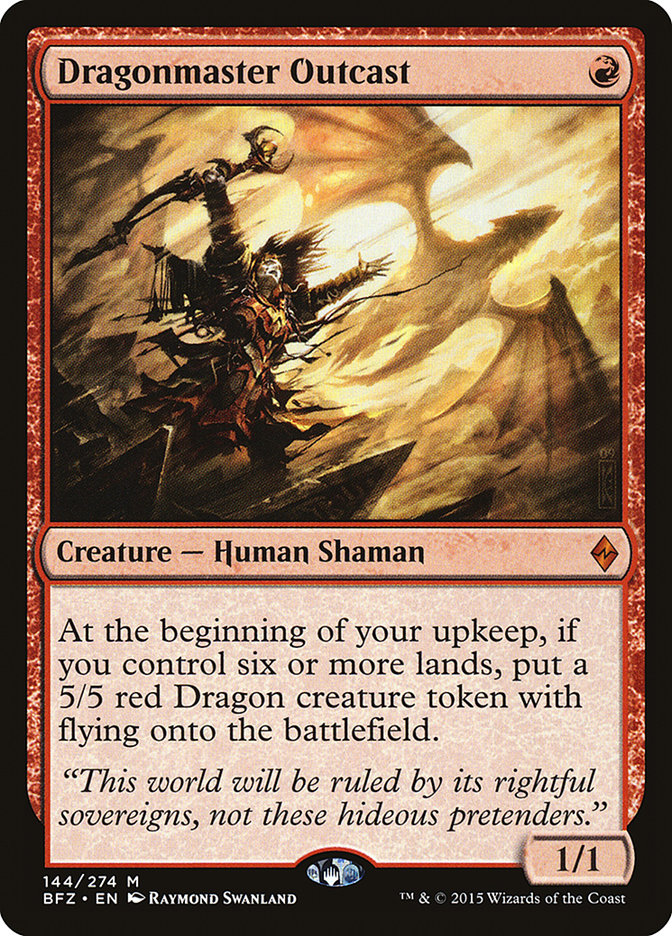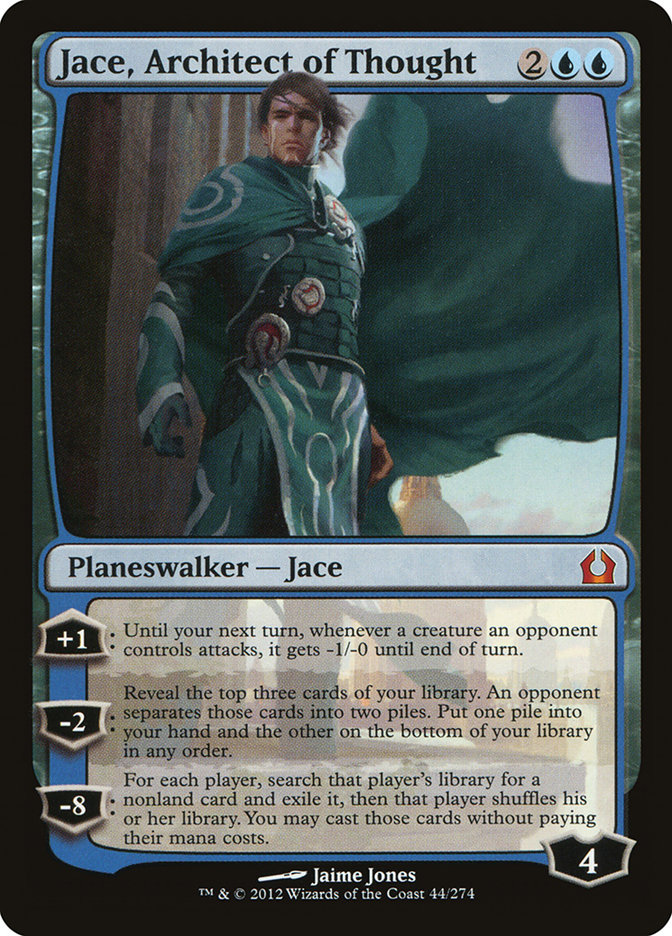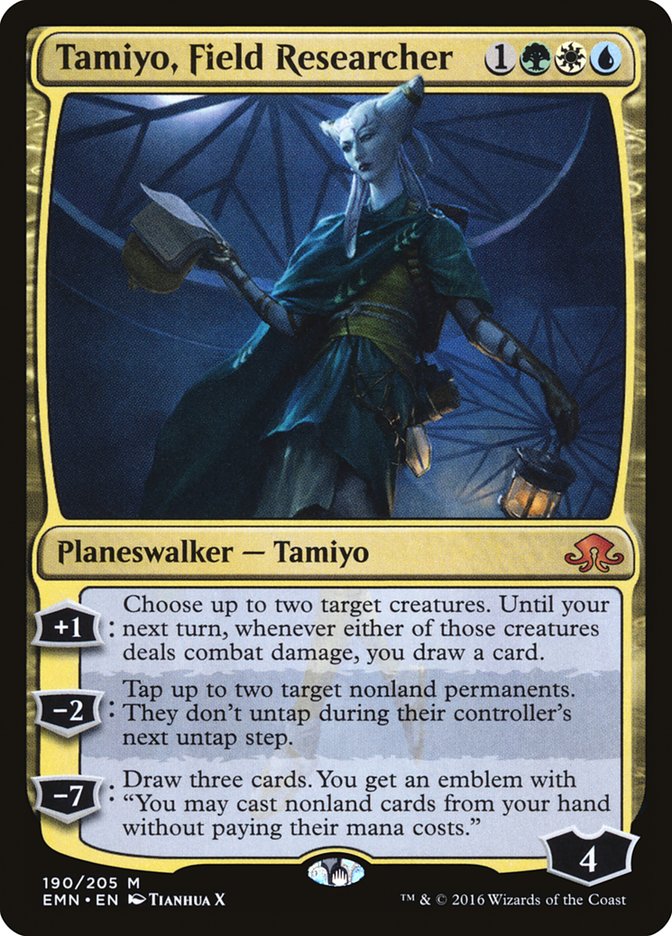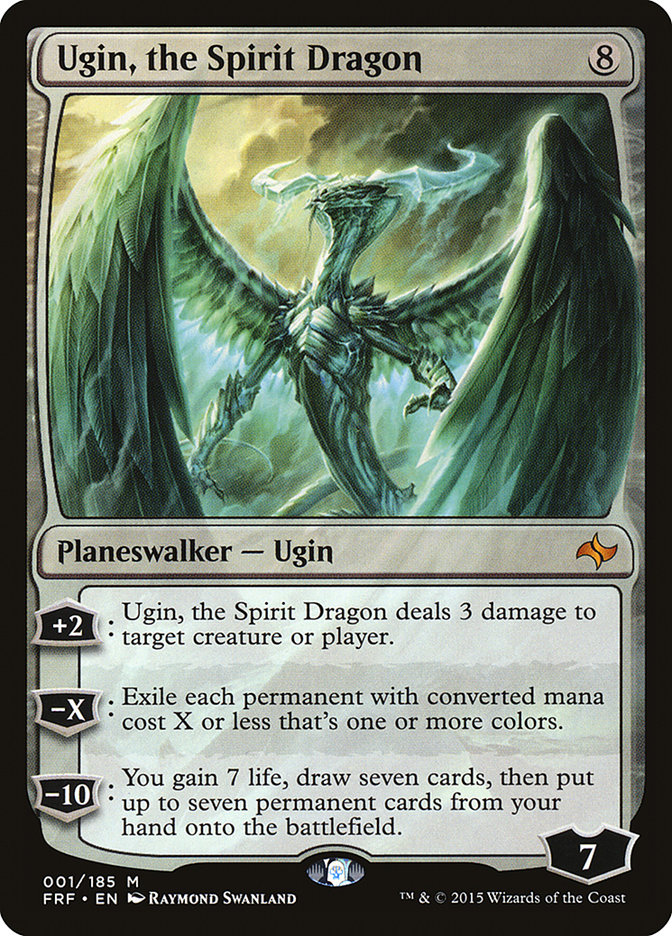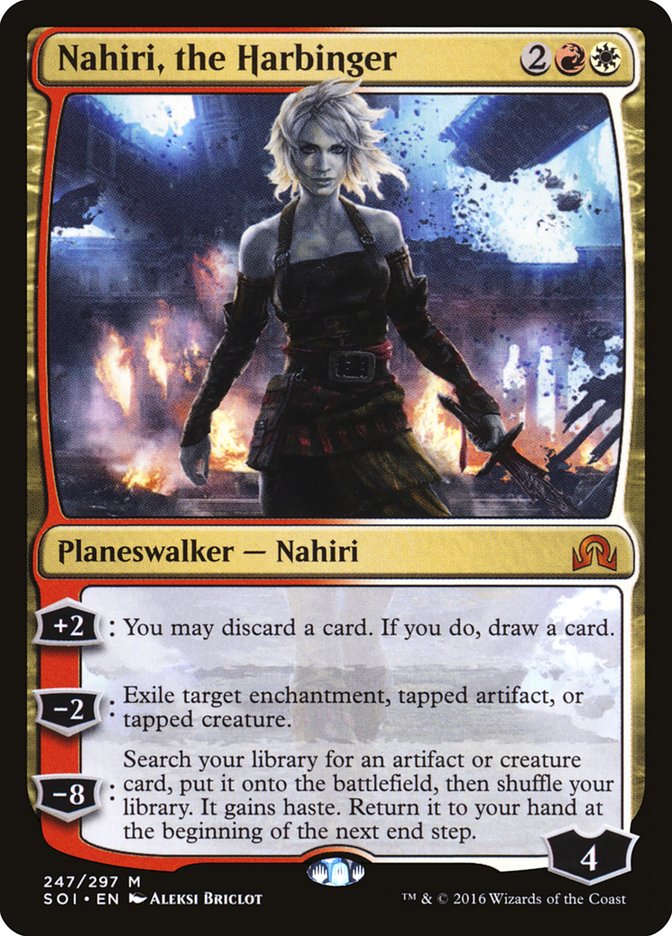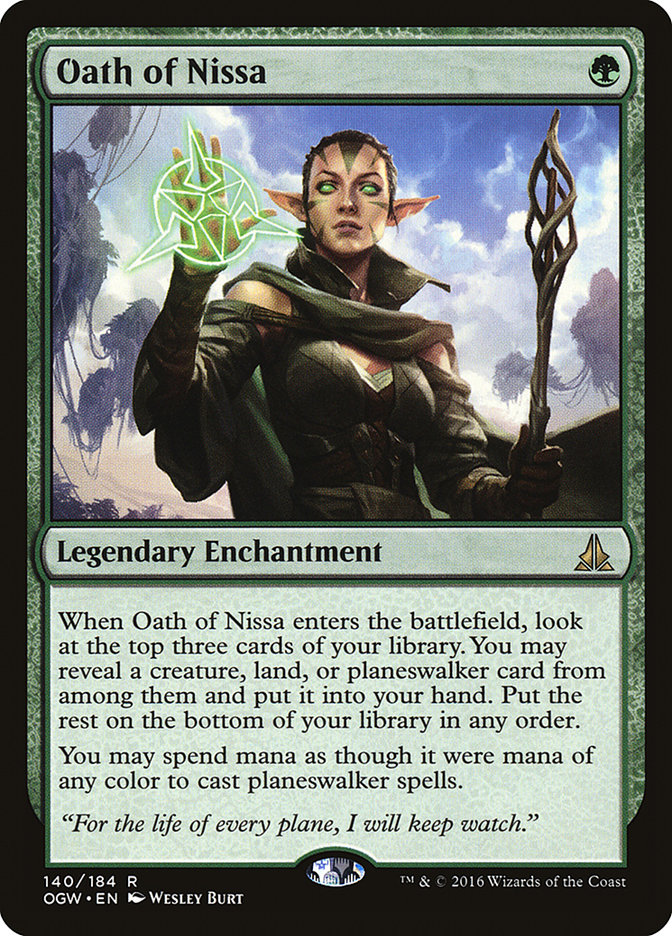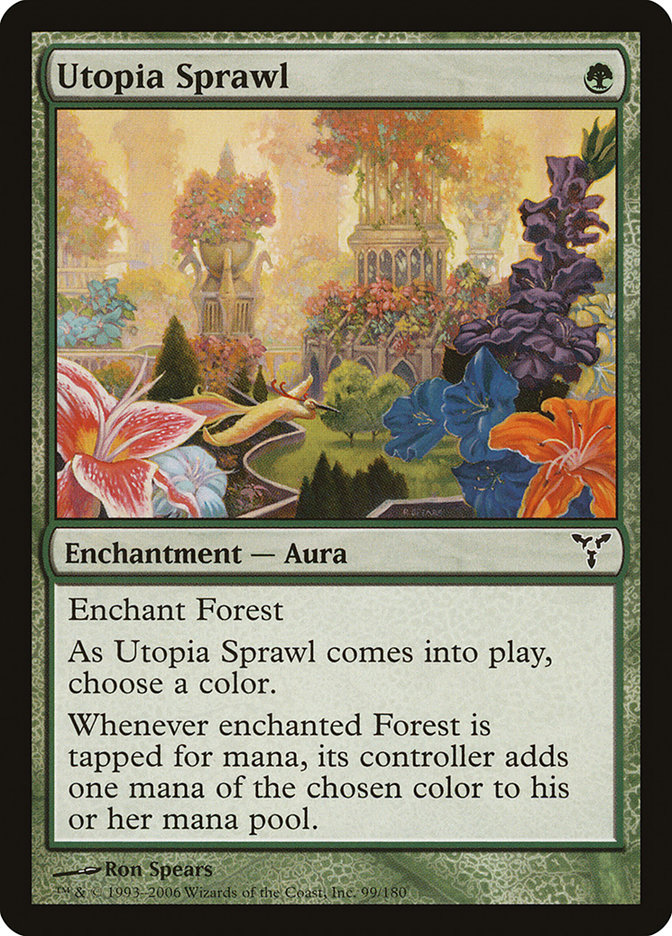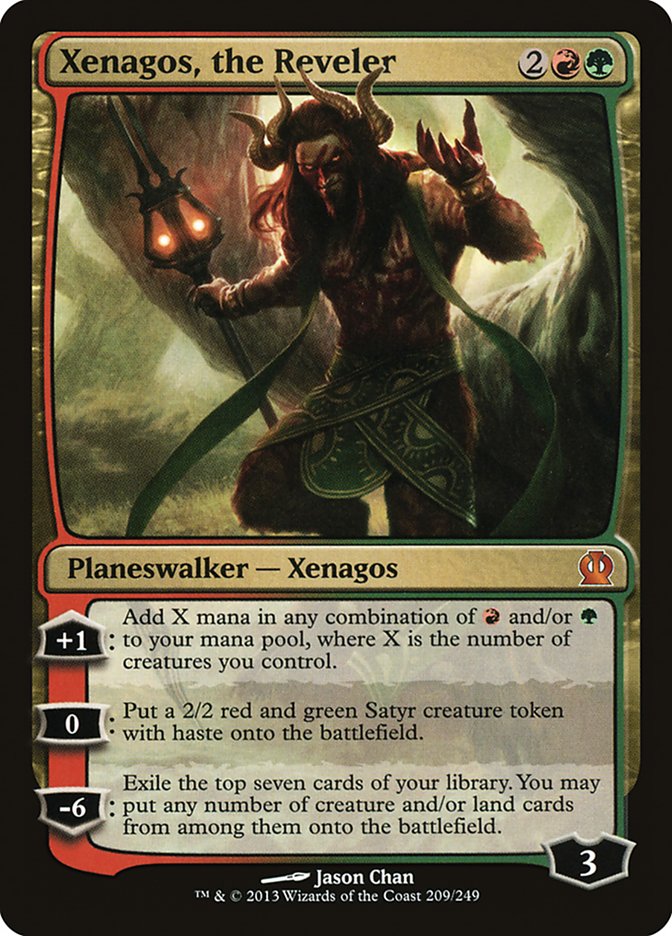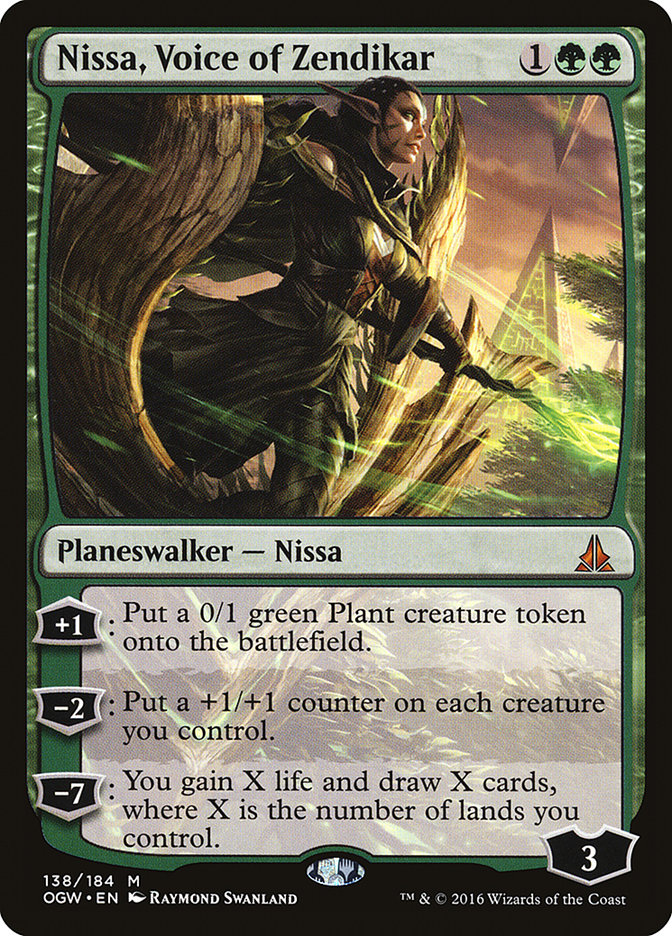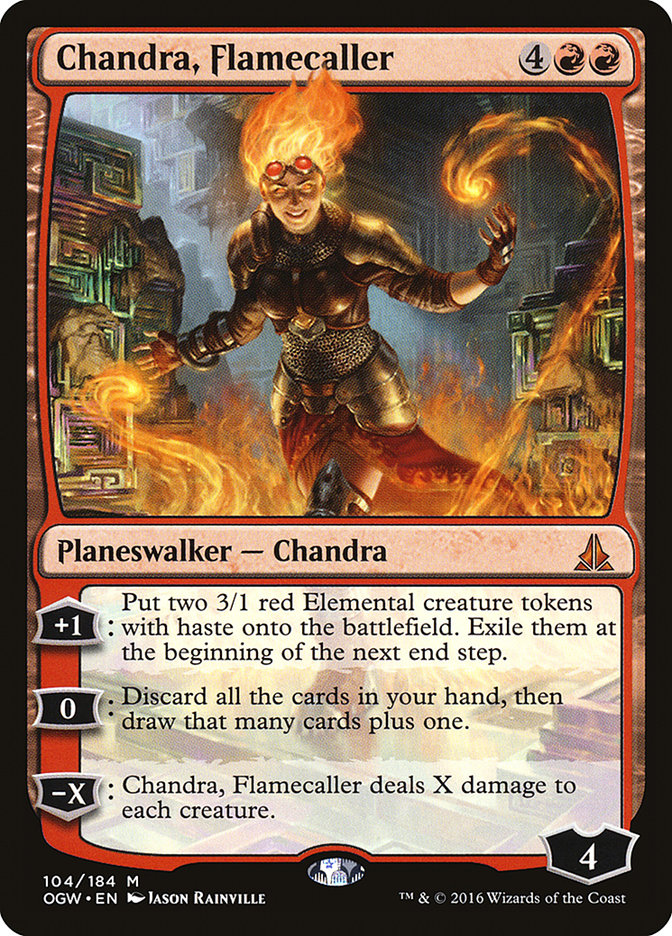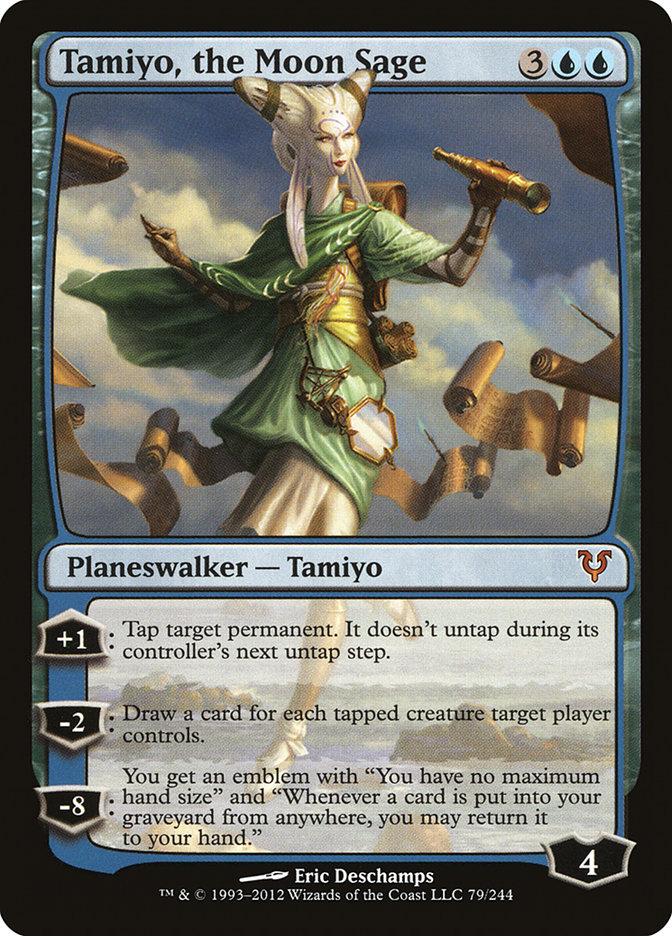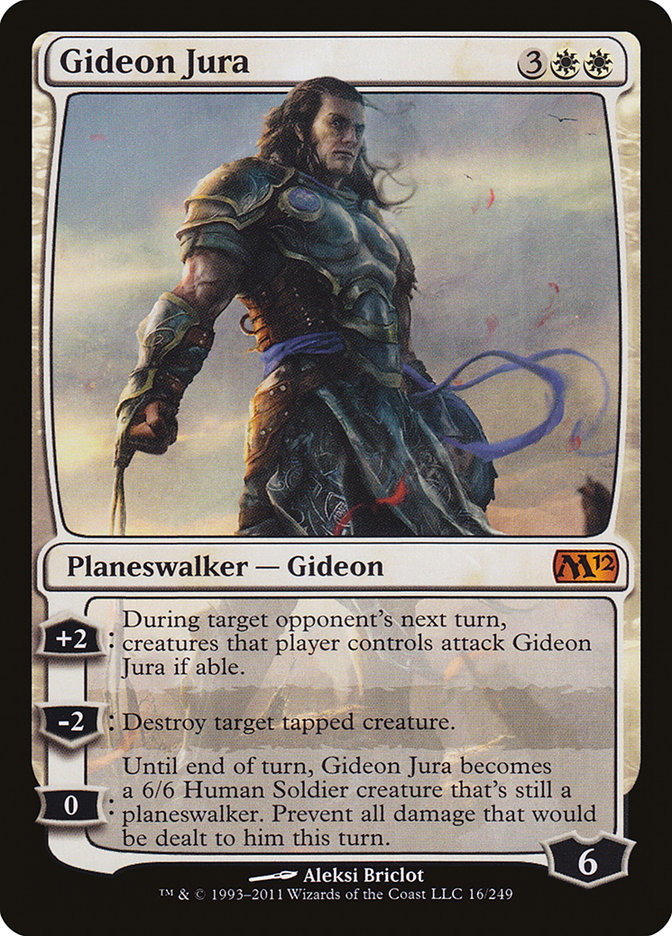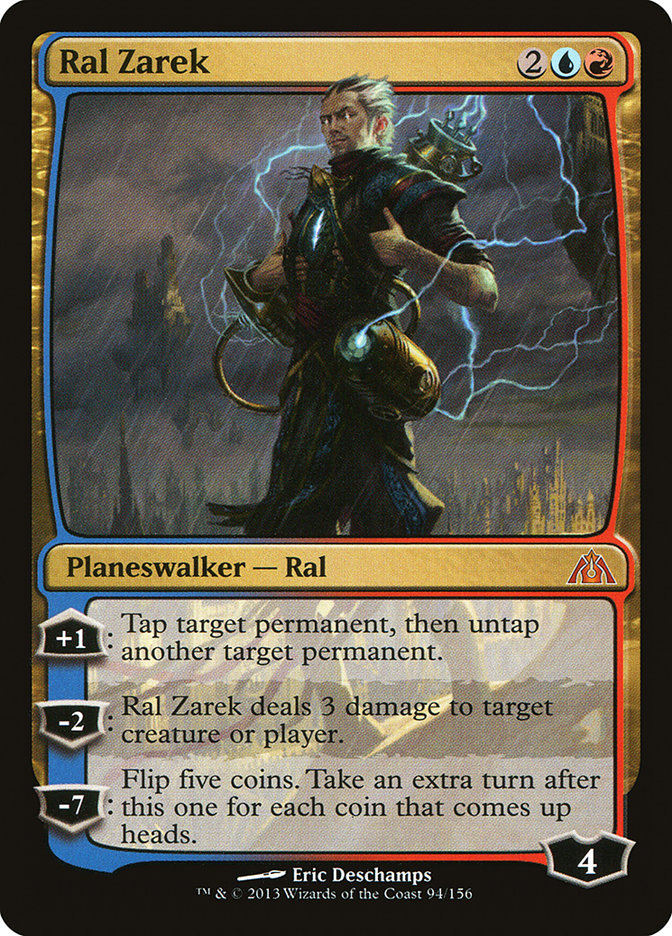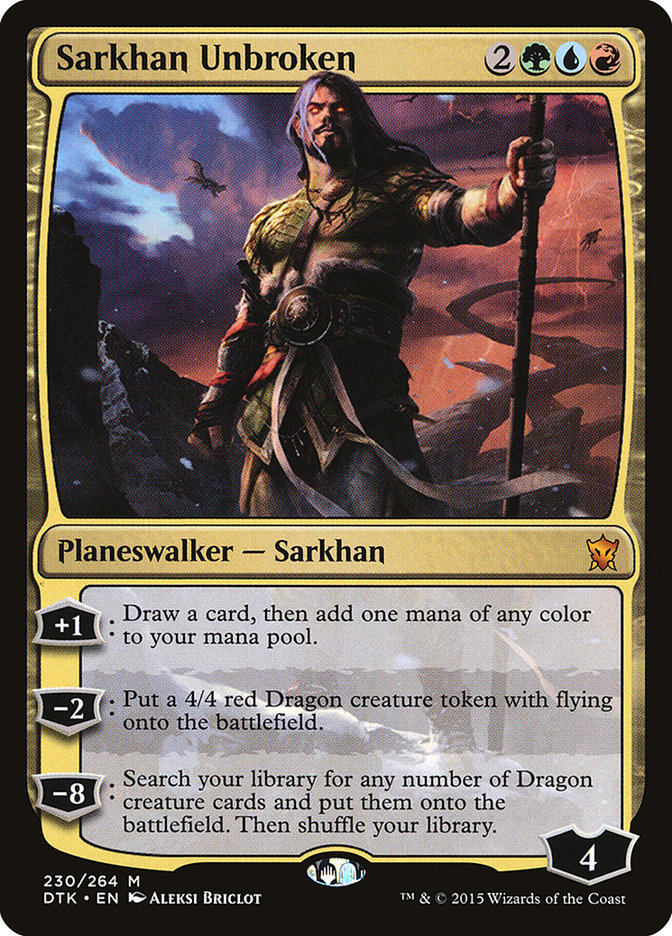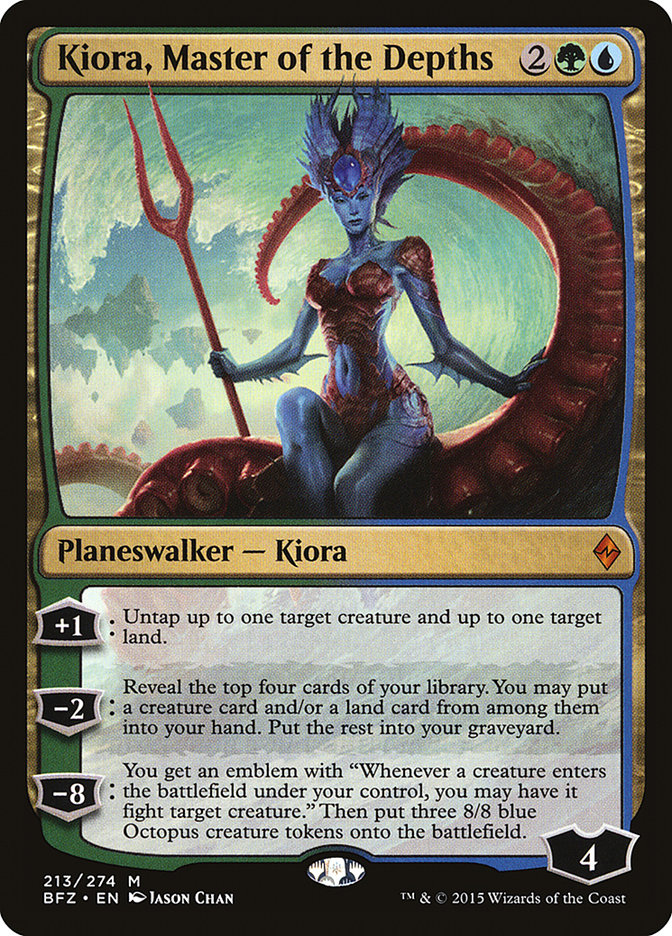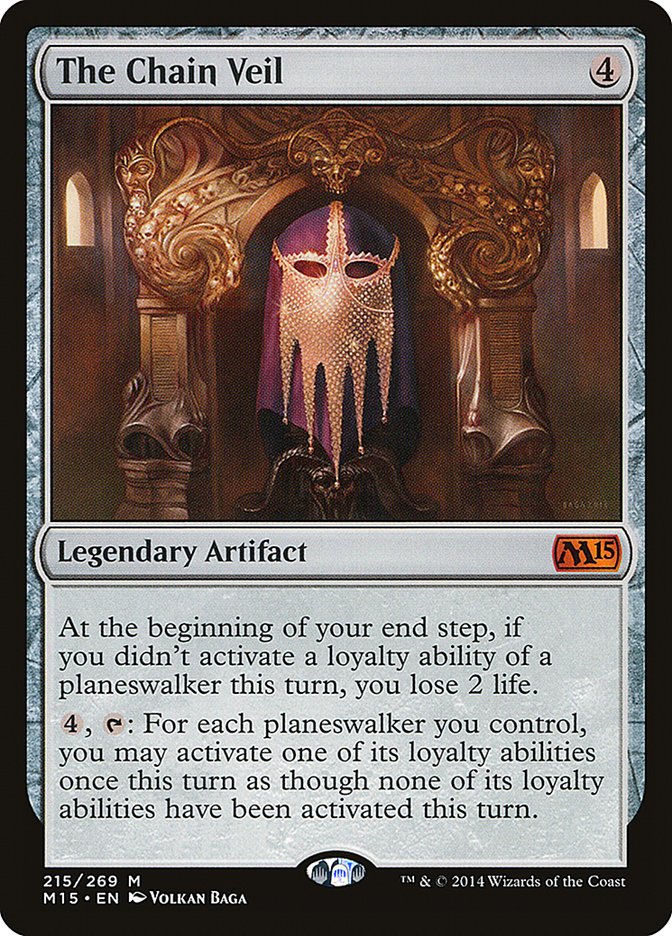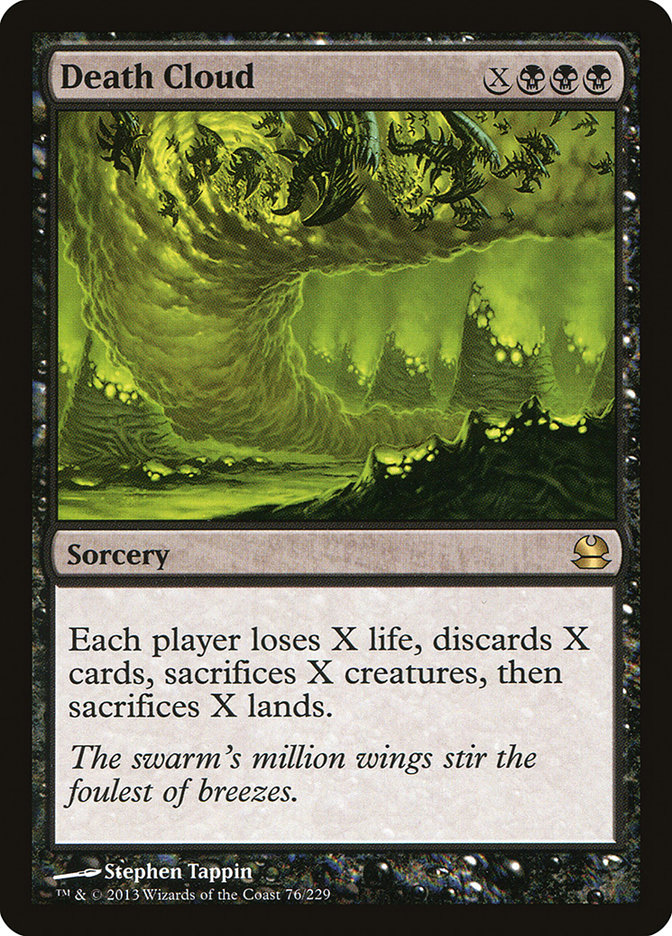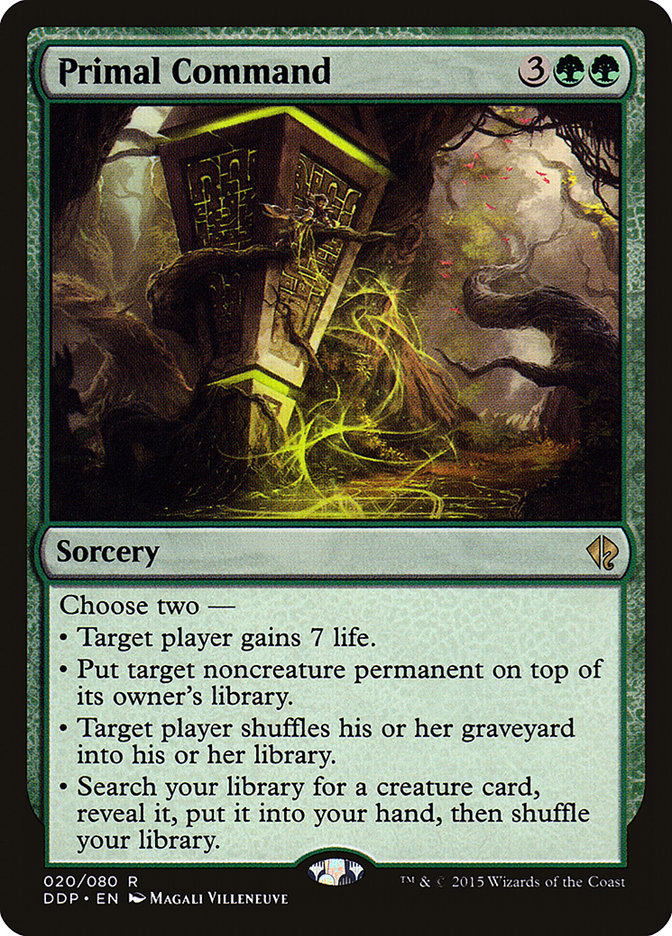Sometimes you play in a major tournament after weeks of preparation, having selected the best deck(s) for the metagame(s) you expect, and when you show up, you had the perfect read on the expected metagame and you end up dominating. Other times you completely misread the metagame, show up with decks that beat everything that isn’t represented, and you get destroyed.
Neither of these things happened to me at the recent #SCGINVI in Atlanta.
I had spent the majority of my testing time trying to pick a deck for Standard. W/U Flash is not my jam, and I was worried that if I played B/G Delirium I would end up in a series of grindy mirrors against people with more experience with the deck. I had been enjoying the B/G Aetherworks deck that Mark Nestico piloted in Knoxville, but in testing a red splash, I found that I just wanted to play the G/R version instead. It had been doing well online, so I figured it was worth a try. My list was pretty garden-variety:
Creatures (11)
Planeswalkers (3)
Lands (21)
Spells (25)

The only change was to play Dragonmaster Outcast in the sideboard, as I think it is excellent in the W/U matchup. Once it starts making Dragons, they really have no way to interact. Sure, they can Stasis Snare the Outcast, but that’s one less Stasis Snare for Emrakul, the Promised End.
The deck should have been well-positioned, especially when you look at the Standard decks in the Top 8 of the same event. Sadly, in the four rounds of Standard, I faced a total of zero B/G Delirium and Vehicles decks. Instead I got the privilege of losing to U/G Colossus, Jeskai Control, and W/U Flash before finally picking up a win against U/R Spells. I’m not usually one to complain about variance, but…that was nothing but variance.
Full disclosure: I ran this list back in the Standard Open the next day. I was a little luckier there, facing Delirium three times. I beat it twice, but in the first match against that deck, I somehow went to time. My opponent was certainly taking his leisurely time about shuffling up for Game 3, and despite being dead on the battlefield at the end of turn 5, he would not concede. Remember, folks: call a judge if you think your opponent is taking too long.
Standard really was not a fun place to be this weekend. Seth Manfield did his best to fix that in Denver, but at this point, I think you could give him one of my brews and he would Top 8 with it.
Pretty sure that man has surpassed mortal skill levels.
Doubling Up
I stayed in the tournament for the Modern rounds, but you don’t want to read about that deck, do you? Wait, that’s the only reason you’re here? Well, then, it is my honor to oblige.
Creatures (10)
Planeswalkers (17)
- 1 Gideon Jura
- 1 Tamiyo, the Moon Sage
- 2 Jace, Architect of Thought
- 1 Ral Zarek
- 1 Xenagos, the Reveler
- 1 Ugin, the Spirit Dragon
- 1 Chandra, Flamecaller
- 2 Nissa, Voice of Zendikar
- 2 Nahiri, the Harbinger
- 2 Tamiyo, Field Researcher
- 2 Chandra, Torch of Defiance
- 1 Nissa, Vital Force
Lands (21)
Spells (12)

I’ll be honest: I approached Nick Miller in something like Round 3 and asked him which of my potential Modern deck choices for the weekend was likely to get me a deck tech. I was already pretty sure it wasn’t going to be my day in Standard, so I figured I would just have some fun in Modern. Nick chose this deck, so that’s what we ran with. Since then, the response to it has been…overwhelmingly positive.
Let’s get one thing out of the way: this is not a Tier 1 deck right now. It can win and is fast enough to beat anything, but it has weaknesses to Infect and U/R Battle Rage. It does very well against fair decks because, even without Doubling Season, we are not particularly fair. Modern decks do not pack answers to planeswalkers most of the time, and even the ones that do will only have one or two in Game 1 and maybe one or two more after that (Jund is really the only one that can go up to four, with Dreadbore joining Maelstrom Pulse). Sure, some decks can just attack the planeswalkers, but all that does is buy us time to find Doubling Season. If we untap with Doubling Season, it is very hard to lose the game.
The planeswalkers we are playing here are carefully selected, and each has its own role. For the most part, they can all use their ultimate as soon as they enter the battlefield if we have a Doubling Season.
Win Conditions
Each of these will let us cast a plethora of other game-winning spells for free. Jace is the preference here, allowing us to fish out our opponent’s game-winning spells as well as our own Emrakul, the Aeons Torn (eventually, after going through all our Jaces). Tamiyo isn’t guaranteed to hit something, but that emblem lasts the whole game and will usually mean we have a few planeswalkers to cast right away. Ugin is much the same but also gives us the option to shoot something for three damage or clean up the battlefield if we need to. Nahiri is more of a requirement than a choice; her filtering and quick ultimate make her very powerful in the deck and the -2 ability can get us out from under Blood Moon or Suppression Field with ease.
As an aside, Blood Moon is not normally a problem on its own. Oath of Nissa makes it laughable, and the mana creatures also help. Be careful not to put a Utopia Sprawl on a nonbasic land if you suspect Blood Moon, as it will fall off. Also be wary that Blood Moon is often seen in the company of Anger of the Gods, and that particular one-two punch is decidedly not good for us more often than not. It’s beatable, especially if there is no pressure being applied, but it’s rough.
Do not overlook the power of Jace’s +1 ability against some of the more aggressive decks. Although we will often want to hold a copy to cast after resolving Doubling Season, he does have the ability to both keep you alive and find you the card you needed. More than any other card in the deck, we will use all three of his abilities.
Mana Production
We’re a mana-intensive deck, so both of these cards are playing very important roles. I have in the past won games with Xenagos tokens just applying constant pressure, but that is a rarity. With Oath of Nissa we can use the mana generated by these two to cast any of the planeswalkers we want, and of course Xenagos makes green mana to cast Doubling Season. Chandra also plays a little defense and sometimes will draw us a card or two, but mostly she is here to draw fire from the opponent and to make mana. Oh, and ultimate. Can’t forget that; it wins games too.
It’s a real shame that Xenagos’s ultimate is largely useless. Oh well; the first two abilities are so good in the deck that he has earned his spot.
Defense and Utility
This is where the deck gets its surprising resilience. Nissa makes an unending stream of chump blockers while also providing fodder for Xenagos, and occasionally her -2 will turn your mana creatures into an army. There are games where you draw a Doubling Season but either don’t see any game-winning planeswalkers or cannot resolve the ones you draw; Nissa is a workhorse in those games as her counters andher Plants get doubled.
Chandra hits surprisingly hard (as in, “swing for twelve”) with a Doubling Season on the battlefield and is no slouch without it. Her main use though is to come down and sweep up annoying creatures that Zoo and the like are wont to use against us. Don’t overlook that middle ability, either; discarding a hand full of lands and mana accelerants is almost always just fine if we have been able to resolve this version of Chandra, and it will draw us closer to our missing pieces.
Tamiyo, the Moon Sage excels at keeping a large threat locked down, but can also set up Nahiri’s -2 to take out problem permanents. Of course her best use is her emblem, which lets us repeatedly ultimate any of our planeswalkers that self-destruct. If that planeswalker is Jace, Architect of Thought, you can -8; cast a Tamiyo, Field Researcher from our library and any spell from theirs; and then keep recasting the Jace to cast every nonland spell in either deck. It’s hilarious, it’s going to end the game, and it’s more than a little demoralizing for the opponent.
Gideon Jura has always been a great foil for aggressive decks, and he is no less so in this deck. Even without a Doubling Season, he is going to enter the battlefield and go to eight loyalty, something that the all-in decks are going to have a hard time getting through without burning most of their pump spells. If we can buy ourselves one or two turns this way, we can probably win the game. Of course, he sometimes just bashes for six, but that’s rarely a bad thing.
Ral Zarek fits in multiple categories. He’s not really a mana producer, but he can untap a Utopia Sprawl-enchanted land. He’s not really a defensive force, but he can remove a nuisance creature. He won’t always win the game with his ultimate, but he sometimes can if we get some lucky flips. He’s the card I am most likely to cut at this point, however.
What missed the cut?
As much as I wish we could slide the Doyen of Dragons into the deck, he’s just a little short. His first ability is undoubtedly powerful, drawing us a card and potentially helping us fix mana. The thing is, if we can cast him, we probably don’t need the extra mana fixing. Making a Dragon token is powerful and could help stave off an Inkmoth Nexus, but it does require a -2 to use and is therefore of limited utility. His ultimate of course does nothing. I wish it were different, I really do, but he just isn’t quite good enough.
Kiora, Master of the Depths is currently being tested. Unlike Sarkhan, we can make great use of her first and third abilities in our deck. The first one is incredibly potent if we have an Arbor Elf and a land with a Utopia Sprawl and can let us have some truly ridiculous turn 2 plays:
Turn 2: Breeding Pool, enchant Pool with Utopia Sprawl and name white. Tap Pool, cast a second Utopia Sprawl and name blue, floating a white mana. Tap Elf to untap Pool, tap Pool for UGW, cast Kiora. Use her first ability to untap Elf and Pool, tap them both, and cast Doubling Season.
That sequence alone is enough to warrant testing her, but the ultimate with a Doubling Season on the battlefield changes from “Wrath of God with severe upside” to “You win.” Six 8/8 tokens that can fight down opposing creatures? I’ll take it.
The Chain Veil is just too gimmicky. It would take the Deploy the Gatewatch slot and, although the potential is undoubtedly there for some very solid plays (he says, flashing two thumbs up with an Aussie grin), it is not a threat on its own. In fact, it can just kill you or at least hasten your demise. The upside, while non-trivial, is not enough to warrant the switch.
The most popular question I have received about this deck has been “Yeah, but how did it do?” I played eight rounds with the deck over the weekend and went 5-3, including a scoop to a pair-up in Round 8 of the Invitational. My losses were to Jund, Goblins and Jeskai Geist. Do I think this is a Tier 1 format-slayer? Not at all. Does it stand a chance of winning against a chunk of the metagame? Absolutely. Will your wins be epic story-creating victories? Oh, I guarantee it.
From the Sidelines
In addition to playing myself, I traveled to Atlanta with two local players who had qualified. One of them, Stephen “Mev” Whelan, was able to secure a Top 16 finish. Big shoutout to Mev for that. While watching Craig, our third member, playing in the Modern rounds, I saw one of the coolest and most underplayed decks in the format giving him an utter trouncing. I asked the pilot, John Prater, to ship me the list. Here’s what had me so intrigued:
Creatures (12)
Planeswalkers (6)
Lands (24)
Spells (19)

Death Cloud is one of the most powerful cards currently seeing little to no play in Modern. I am a sucker for a B/G grindy deck and this fits the bill, looking to ramp hard and then use that permanent advantage to leave the pilot with a battlefield presence and the opponent with…well, nothing. The main deck is set up well to demolish the opponent’s hand Jund-style, but with the additional end-game of Death Cloud or Primal Command / Eternal Witness. All that’s missing is a Plow Under for optimum tilt induction.
John mentioned that there are four flex spots in the maindeck: the second Maelstrom Pulse, the Hero’s Downfall, the third Liliana, and the Dismember. It’s hard to argue with those choices for the metagame as it stands, though the second Pulse might be a little much. I’ve always been a big fan of Vraska the Unseen in this sort of deck and I might be tempted to make that switch. Otherwise the list looked very tight and powerful in action, and I hope to take it for a spin if I ever tire of Doubling Season (I won’t).
That’s all we have for this week, folks. As always, thanks for stopping by. With the holidays on the horizon, the next couple of weeks may well see some different content from me, but that doesn’t mean I have stopped the brewing process in the background. After all…Lansdell’s Always Brewing.
Until next time…Brew On!


